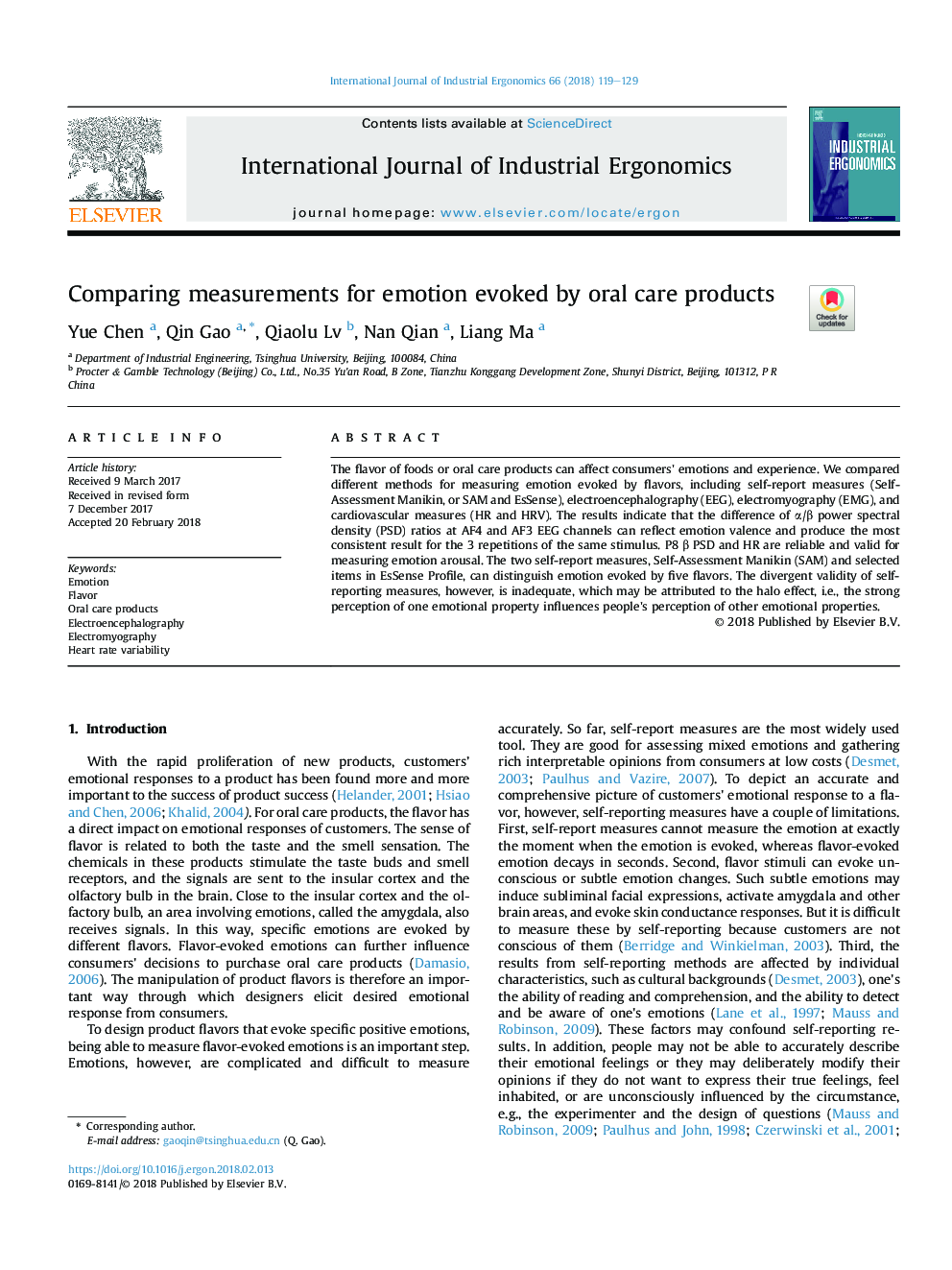| Article ID | Journal | Published Year | Pages | File Type |
|---|---|---|---|---|
| 7530417 | International Journal of Industrial Ergonomics | 2018 | 11 Pages |
Abstract
The flavor of foods or oral care products can affect consumers' emotions and experience. We compared different methods for measuring emotion evoked by flavors, including self-report measures (Self-Assessment Manikin, or SAM and EsSense), electroencephalography (EEG), electromyography (EMG), and cardiovascular measures (HR and HRV). The results indicate that the difference of α/β power spectral density (PSD) ratios at AF4 and AF3 EEG channels can reflect emotion valence and produce the most consistent result for the 3 repetitions of the same stimulus. P8 β PSD and HR are reliable and valid for measuring emotion arousal. The two self-report measures, Self-Assessment Manikin (SAM) and selected items in EsSense Profile, can distinguish emotion evoked by five flavors. The divergent validity of self-reporting measures, however, is inadequate, which may be attributed to the halo effect, i.e., the strong perception of one emotional property influences people's perception of other emotional properties.
Related Topics
Physical Sciences and Engineering
Engineering
Industrial and Manufacturing Engineering
Authors
Yue Chen, Qin Gao, Qiaolu Lv, Nan Qian, Liang Ma,
